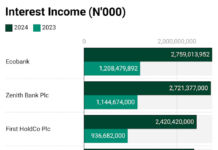A record two-thirds (66%) of senior oil and gas professionals report that their organization is actively adapting to a less carbon-intensive energy mix in 2021, up from just 44% in 2018. Some 57% plan to increase investment in renewables, up from 44% last year, half (48%) expect to increase investment in green or decarbonized gas.
Just a fifth (21%) say they will increase investment in oil projects in 2021, as the sector increasingly comes to terms with the notion that the world’s demand for oil has peaked or will peak in the short to medium term. Expectations for an increase in natural gas investment remain steady at 37%.
The majority of senior oil and gas professionals expect these shifts in investment will lead to a wider reshaping of the industry. Eight-in-ten (78%) believe there will be increased consolidation in the year ahead, up from 64% one year ago. Strategic reorientation may also involve asset and business sales, with 63% expecting more demergers, divestments and spin-offs, up from 46% last year.
Transformational investments come despite a crash in confidence for industry growth following the Covid-19 pandemic and subsequent oil and gas market crash. Only 39% of senior oil and gas professionals are confident about industry growth in 2021, down from 66% last year.
Turmoil and Transformation, DNV GL’s outlook for the oil and gas industry in 2021, suggests priorities are shifting as investors reassess the risks of financing oil and gas projects, and as governments and industry pour billions into green recovery strategies following the Covid-19 pandemic. The research is based on a survey of more than 1,000 senior oil and gas professionals and in-depth interviews with industry executives.
“Net-zero climate policies began to proliferate in 2020, from Europe to China, and made it onto the table in the US. Long term, net zero policies have the potential to drive deep decarbonization of the world’s energy system, and they are already changing the direction of the oil and gas industry,” said Remi Eriksen, Group President and CEO of DNV GL.
The oil and gas industry is moving through its third major downturn in 12 years, but the outlook for 2021 is influenced by the possibility that this downturn may be different from those of the past. Perhaps the most significant difference for the industry for 2021, is the shift in capital away from fossil fuels.
“The financial markets – through the effects of the Covid-19 pandemic – have seen what peak oil demand could look like, and are increasingly factoring in changing sentiment in society towards a decarbonized future. Decarbonization has moved from something on the horizon to an immediate priority, and there are signs that our sector may invest to transform rather than cut its way out of the present crisis,” said Eriksen.
Cost cutting will still be a universal priority (96%) for 2021, but the industry is already lean. A resilient 63% say their organization will still achieve acceptable profits if the oil price averages between USD40 to 50 per barrel in 2021. However, there are signs that traditional cost cutting methods are hitting their limits.
“The trouble with the industry’s available cost efficiency levers is that most of them have been pulled quite hard already. Cost efficiency has been an uninterrupted priority in each of the past seven years. For some, it is getting harder to squeeze any more water from the sponge,” said Hans Kristian Danielsen, Vice President, DNV GL. “Four fifths of senior oil and gas professionals say cost cutting will be more challenging than ever in 2021.”
Significantly, the oil and gas industry is not hitting the spending brakes as hard as it did after the downturn in 2014. While the proportion of respondents expecting to maintain or increase capex in the year ahead has fallen to 62% – down from 72% going into 2020 – this is much higher than the 43% recorded following the last downturn.
The industry cut costs and waited for oil demand to rise during the last downturn, then renewed investment in oil and gas. While some in the industry are expecting a quick recovery, our research shows that most are looking longer term to transformational investments – to projects that will decarbonize the industry.
“Companies are betting long term when making transformational investments, aiming to navigate the multiple transitions taking place at different speeds around the world. While we see a crash in confidence for industry growth in 2021, we see growing confidence in the opportunities that lie in a decarbonized future,” said Danielsen.
Turmoil and Transformation is an industry benchmark study on the outlook for the oil and gas industry in 2021. The research is published by DNV GL, the technical advisor to the sector. It was launched in 2011 and is now in its eleventh year. Each edition builds on the findings of previous research to provide a consistent set of industry insights.
The 2021 report assesses industry sentiment, confidence, and priorities, and provides expert analysis of the key challenges and opportunities facing the industry in the year ahead. It is based on a global survey of over 1,000 senior industry professionals and executives, along with in-depth interviews with a range of experts, business leaders, and analysts. The research was conducted during November and December 2020. It was carried out by teams from DNV GL and Longitude (a Financial Times company). The organizations surveyed vary in size: 32% had annual revenue of USD 100 million (m) or less, while 27% had annual revenue in excess of USD 1 billion (bn). Respondents were drawn from across the oil and gas value chain, including publicly listed companies and privately held firms. They represent a range of functions within the industry, from board-level executives to senior engineers. The findings and views expressed in the report do not necessarily reflect the views of DNV GL.

























